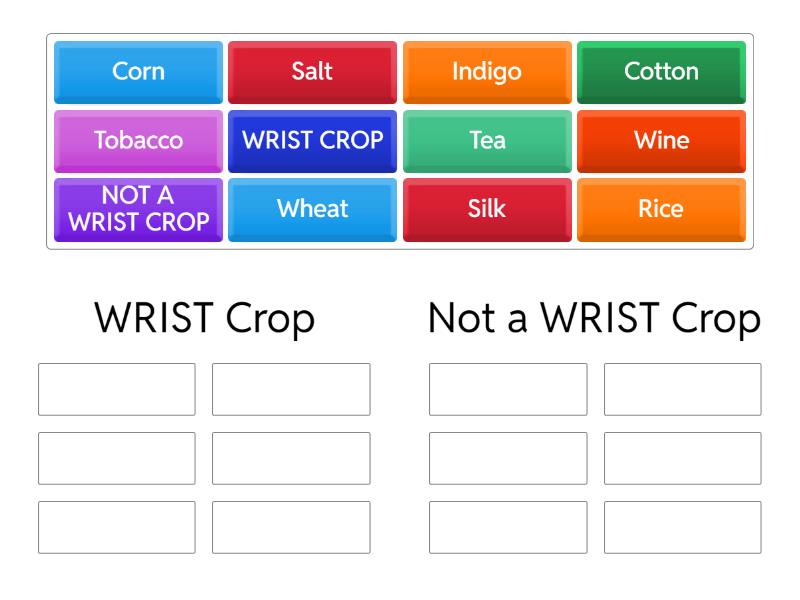Wrist crops, often overlooked and underappreciated, hold a fascinating realm of characteristics and benefits that may not be on your radar. This nuanced subject deserves attention, as wrist crops—essentially short, dense varieties of crops grown in relatively small spaces—can significantly alter our approach to gardening, food production, and sustainability. Below, we delve into some compelling facts about wrist crops that promise to alter your perspective and pique your curiosity.
1. Compact Growth, Maximum Yield
One of the most striking features of wrist crops is their ability to produce a substantial yield despite their diminutive stature. Crops like dwarf tomatoes, mini peppers, and petite greens can flourish in confined areas. This makes them particularly appealing for urban gardeners who may have limited space and seek to maximize their output.
2. Nutrient Density
Wrist crops often exhibit heightened nutrient concentration compared to their larger counterparts. Smaller plants tend to invest more energy in producing essential nutrients, meaning a single serving can provide a hefty dose of vitamins and minerals. This characteristic renders them an excellent choice for health-conscious individuals seeking nutrient-rich options.
3. Aesthetic Appeal
Beyond their practicality, wrist crops can serve as ornamental features in gardens. Their vibrant colors and unique shapes can turn any small plot into a visually stimulating landscape. The infusion of color from miniature fruits and vegetables can complement flower beds and enhance the overall charm of the garden.
4. Pests and Diseases Resistance
Surprisingly, many wrist crops are more resilient to pests and diseases than standard crops. Their compact size means they often experience less severe infestations and disease pressure. Moreover, some species possess innate resistance traits, making them an excellent choice for organic farming practices that strive to minimize chemical inputs.
5. Efficient Use of Resources
Wrist crops are champions of resource efficiency. They require less water, fertilizer, and space, making them capable of thriving under burdened circumstances. Their deep-root systems help to capture moisture and nutrients from the soil, creating a sustainable cycle of growth that minimizes environmental impact.
6. Ideal for Vertical Gardening
The advent of vertical gardening has opened fresh opportunities for wrist crops. Their compact growth habit allows them to be cultivated in vertical gardens or on trellises, maximizing the use of vertical space while keeping gardening accessible and organized. This arrangement not only saves ground space but also invites an innovative edge to small-scale gardening.
7. Year-Round Cultivation
Wrist crops exhibit potential for year-round cultivation, particularly in controlled environments like greenhouses or indoor setups. Their short growth cycles mean they can be planted and harvested multiple times throughout the year, providing a continuous supply of fresh produce regardless of climate considerations.
8. Cultivar Diversity
Delve into the world of wrist crops, and you’ll discover an impressive assortment of cultivars. From miniature varieties of traditional crops like carrots and cucumbers to unique hybrids like cocktail tomatoes, the range is extensive. As such, cultivating these crops allows for culinary creativity and a playful exploration of flavors and textures.
9. Improved Pollinator Friendliness
Wrist crops can invite beneficial pollinators into the garden. Their smaller flowers attract bees, butterflies, and other essential pollinators, ultimately contributing to a healthier ecosystem. By incorporating wrist crops into your gardening repertoire, you not only enhance your produce yield but also promote biodiversity.
10. Connection to Heritage and Culture
Many wrist crops have historical significance tied to cultural heritage. Varieties such as landrace beans and heirloom peppers carry stories from countless generations. Embracing these crops fosters a connection to our past, creating a narrative around food that transcends mere consumption.
11. Short Growing Seasons
Wrist crops generally have shorter growing seasons, which makes them an excellent option for regions with shorter growing periods. Their ability to mature quickly allows gardeners to enjoy fresh produce even in less-than-ideal agricultural conditions, ensuring that everyone can partake in the satisfaction of homegrown food.
12. Soil Aeration and Structure
The root systems of wrist crops contribute positively to soil structure. By planting a variety of species, gardeners can promote improved aeration, which enhances nutrient and water retention. This benefit extends beyond a single growing cycle, fostering soil health for future crops.
13. Economic Viability
Wrist crops provide an economically viable option for small-scale farmers and home gardeners alike. Their minimal space requirements mean lower initial investments in land, equipment, and maintenance. Additionally, the ability to yield high volumes of produce allows for lucrative opportunities within local markets and community-supported agriculture schemes.
14. Sustainability in Action
Finally, cultivating wrist crops aligns with sustainable agricultural principles. They can be grown with minimal inputs, require less energy for transport due to their potential for local cultivation, and contribute to reducing carbon footprints. By advocating for wrist crops, we endorse practices aimed at protecting our planet’s future.
In summary, wrist crops offer an alluring blend of efficiency, nutrition, and aesthetic appeal. Their unique characteristics challenge conventional perspectives on crop cultivation, inviting gardeners and food enthusiasts alike to explore this compelling domain. Embracing wrist crops may not only enhance your garden but also foster a deeper understanding of sustainability and agriculture’s potential to thrive in harmony with our urban environments.










